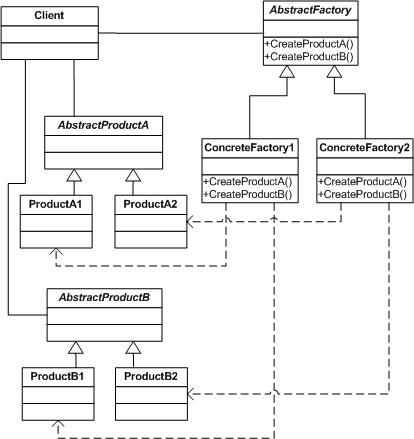|
|
我將圖形編輯程序分為兩類:一類是繪圖程序,利用這種程序可以一個像素一個像素地繪制圖像;另外一類是制圖程序,這種程序提供了一組對象,例如線、橢圓和矩形,您可以使用這些對象來組合成一幅大圖像,例如 JPEG。繪圖程序非常適合進行像素級的控制。但是對于業務圖形來說,制圖程序是比較好的方式,因為大部分圖形都是由矩形、線和橢圓組成的。
php 內置的制圖基本操作與繪圖程序非常類似。它們對于繪制圖像來說功能非常強大;但是如果您希望自己的圖像是一組對象集合時,這就不太適合了。本文將向您展示如何在 php 圖形庫的基礎上構建一個面向對象的圖形庫。您將使用 php V5 中提供的面向對象的擴展。
具有面向對象的圖形支持之后,您的圖形代碼就非常容易理解和維護了。您可能還需要從一種單一的圖形源將圖形合成為多種類型的媒介:Flash 電影、SVG 等等。
目標
創建一個圖形對象庫包括 3 個主要的目標:
從基本操作切換到對象上
它不使用 imageline、imagefilledrectangle 以及其他圖形函數,這個庫應該提供一些對象,例如 Line、Rectangle 和 Oval,它們可以用來制作圖像。它應該還可以支持構建更大的復雜對象或對對象進行分組的功能。
可以進行 z 值排序
制圖程序讓畫家可以在畫面表面上上下移動圖形對象。這個庫應該可以支持將一個對象放到其他對象前后的功能:它使用了一個 z 值,用來定義對象從制圖平面開始的高度。z 值越大的對象被畫得越晚,也就出現在那些 z 值較小的對象之上。
提供 viewport 的轉換
通常,數據的坐標空間與圖像的坐標空間是不同的。php 中的圖形基本操作是對圖像的坐標平面進行操作的。這個圖形庫應該支持 viewport 的規范,這樣您就可以在一個程序員熟悉的坐標系統中指定圖形了,并且可以自動進行伸縮來適應任何圖像的大小。
由于這里有很多特性,您將一步步地編寫代碼來展示這些代碼如何不斷增加功能。
基礎知識
讓我們首先來看一個圖形環境對象和一個名為 GraphicsObject 的接口,它是使用一個 Line 類實現的,功能就是用來畫線。UML 如圖 1 所示。
圖 1. 圖形環境和圖形對象接口

GraphicsEnvironment 類中保存了圖形對象和一組顏色,還包括寬度和高度。saveASPng 方法負責將當前的圖像輸出到指定的文件中。
GraphicsObject 是任何圖形對象都必須使用的接口。要開始使用這個接口,您所需要做的就是使用 render 方法來畫這個對象。它是由一個 Line 類實現的,它利用 4 個坐標:開始和結束的 x 值,開始和結束的 y 值。它還有一個顏色。當調用 render 時,這個對象從 sx,sy 到 ex,ey 畫一條由名字指定的顏色的線。
這個庫的代碼如清單 1 所示。
清單 1. 基本的圖形庫
<?php class GraphicsEnvironment { public $width; public $height; public $gdo; public $colors = array(); public function __construct( $width, $height ) { $this->width = $width; $this->height = $height; $this->gdo = imagecreatetruecolor( $width, $height ); $this->addColor( "white", 255, 255, 255 ); imagefilledrectangle( $this->gdo, 0, 0, $width, $height, $this->getColor( "white" ) ); } public function width() { return $this->width; } public function height() { return $this->height; } public function addColor( $name, $r, $g, $b ) { $this->colors[ $name ] = imagecolorallocate( $this->gdo, $r, $g, $b ); } public function getGraphicObject() { return $this->gdo; } public function getColor( $name ) { return $this->colors[ $name ]; } public function saveASPng( $filename ) { imagepng( $this->gdo, $filename ); } } abstract class GraphicsObject { abstract public function render( $ge ); } class Line extends GraphicsObject { private $color; private $sx; private $sy; private $ex; private $ey; public function __construct( $color, $sx, $sy, $ex, $ey ) { $this->color = $color; $this->sx = $sx; $this->sy = $sy; $this->ex = $ex; $this->ey = $ey; } public function render( $ge ) { imageline( $ge->getGraphicObject(), $this->sx, $this->sy, $this->ex, $this->ey, $ge->getColor( $this->color ) ); } } ?> |
測試代碼如清單 2 所示:
清單 2. 基本圖形庫的測試代碼
<?php require_once( "glib.php" ); $ge = new GraphicsEnvironment( 400, 400 ); $ge->addColor( "black", 0, 0, 0 ); $ge->addColor( "red", 255, 0, 0 ); $ge->addColor( "green", 0, 255, 0 ); $ge->addColor( "blue", 0, 0, 255 ); $gobjs = array(); $gobjs []= new Line( "black", 10, 5, 100, 200 ); $gobjs []= new Line( "blue", 200, 150, 390, 380 ); $gobjs []= new Line( "red", 60, 40, 10, 300 ); $gobjs []= new Line( "green", 5, 390, 390, 10 ); foreach( $gobjs as $gobj ) { $gobj->render( $ge ); } $ge->saveASPng( "test.png" ); ?> |
這個測試程序創建了一個圖形環境。然后創建幾條線,它們指向不同的方向,具有不同的顏色。然后,render 方法可以將它們畫到圖形平面上。最后,這段代碼將這個圖像保存為 test.png。
在本文中,都是使用下面的命令行解釋程序來運行這段代碼,如下所示:
% php test.php % |
圖 2 顯示了所生成的 test.png 文件在 Firefox 中的樣子。
圖2. 簡單的圖形對象測試
這當然不如蒙娜麗莎漂亮,但是可以滿足目前的工作需要。
[NextPage]
添加維數
我們的第一個需求 ―― 提供圖形對象的能力 ―― 已經滿足了,現在應該開始滿足第二個需求了:可以使用一個 z 值將一個對象放到其他對象的上面或下面。
我們可以將每個 z 值當作是原始圖像的一個面。所畫的元素是按照 z 值從最小到最大的順序來畫的。例如,讓我們畫兩個圖形元素:一個紅色的圓和一個黑色的方框。圓的 z 值是 100,而黑方框的 z 值是 200。這樣會將圓放到方框之后,如圖 3 所示:
圖3. 不同 z 值的面
我們只需要修改一下 z 值就可以將這個紅圓放到黑方框之上。要實現這種功能,我們需要讓每個 GraphicsObject 都具有一個 z() 方法,它返回一個數字,就是 z 值。由于您需要創建不同的圖形對象(Line、Oval 和 Rectangle),您還需要創建一個基本的類 BoxObject,其他 3 個類都使用它來維護起點和終點的坐標、z 值和這個對象的顏色(請參看圖 4)。
圖 4. 給系統添加另外一維:z 值
這個圖形庫的新代碼如清單 3 所示:
清單 3. 可以處理 z 信息的圖形庫
<?php class GraphicsEnvironment { public $width; public $height; public $gdo; public $colors = array(); public function __construct( $width, $height ) { $this->width = $width; $this->height = $height; $this->gdo = imagecreatetruecolor( $width, $height ); $this->addColor( "white", 255, 255, 255 ); imagefilledrectangle( $this->gdo, 0, 0, $width, $height, $this->getColor( "white" ) ); } public function width() { return $this->width; } public function height() { return $this->height; } public function addColor( $name, $r, $g, $b ) { $this->colors[ $name ] = imagecolorallocate( $this->gdo, $r, $g, $b ); } public function getGraphicObject() { return $this->gdo; } public function getColor( $name ) { return $this->colors[ $name ]; } public function saveASPng( $filename ) { imagepng( $this->gdo, $filename ); } } abstract class GraphicsObject { abstract public function render( $ge ); abstract public function z(); } abstract class BoxObject extends GraphicsObject { protected $color; protected $sx; protected $sy; protected $ex; protected $ey; protected $z; public function __construct( $z, $color, $sx, $sy, $ex, $ey ) { $this->z = $z; $this->color = $color; $this->sx = $sx; $this->sy = $sy; $this->ex = $ex; $this->ey = $ey; } public function z() { return $this->z; } } class Line extends BoxObject { public function render( $ge ) { imageline( $ge->getGraphicObject(), $this->sx, $this->sy, $this->ex, $this->ey, $ge->getColor( $this->color ) ); } } class Rectangle extends BoxObject { public function render( $ge ) { imagefilledrectangle( $ge->getGraphicObject(), $this->sx, $this->sy, $this->ex, $this->ey, $ge->getColor( $this->color ) ); } } class Oval extends BoxObject { public function render( $ge ) { $w = $this->ex - $this->sx; $h = $this->ey - $this->sy; imagefilledellipse( $ge->getGraphicObject(), $this->sx + ( $w / 2 ), $this->sy + ( $h / 2 ), $w, $h, $ge->getColor( $this->color ) ); } } ?> |
測試代碼也需要進行更新,如清單 4 所示。
清單 4. 更新后的測試代碼
<?php require_once( "glib.php" ); function zsort( $a, $b ) { if ( $a->z() < $b->z() ) return -1; if ( $a->z() > $b->z() ) return 1; return 0; } $ge = new GraphicsEnvironment( 400, 400 ); $ge->addColor( "black", 0, 0, 0 ); $ge->addColor( "red", 255, 0, 0 ); $ge->addColor( "green", 0, 255, 0 ); $ge->addColor( "blue", 0, 0, 255 ); $gobjs = array(); $gobjs []= new Oval( 100, "red", 50, 50, 150, 150 ); $gobjs []= new Rectangle( 200, "black", 100, 100, 300, 300 ); usort( $gobjs, "zsort" ); foreach( $gobjs as $gobj ) { $gobj->render( $ge ); } $ge->saveASPng( "test.png" ); ?> |
此處需要注意兩件事情。首先是我們添加了創建 Oval 和 Rectangle 對象的過程,其中第一個參數是 z 值。其次是調用了 usort,它使用了 zsort 函數來對圖形對象根據 z 值進行排序。
php技術:PHP 5.0創建圖形的實用方法完整篇第1/3頁,轉載需保留來源!
鄭重聲明:本文版權歸原作者所有,轉載文章僅為傳播更多信息之目的,如作者信息標記有誤,請第一時間聯系我們修改或刪除,多謝。



